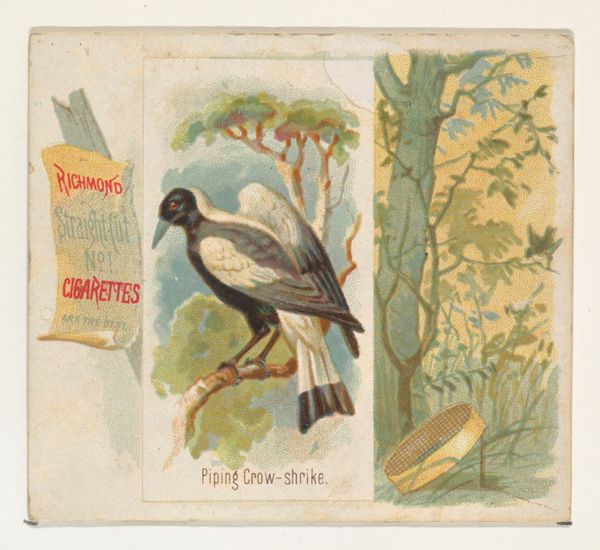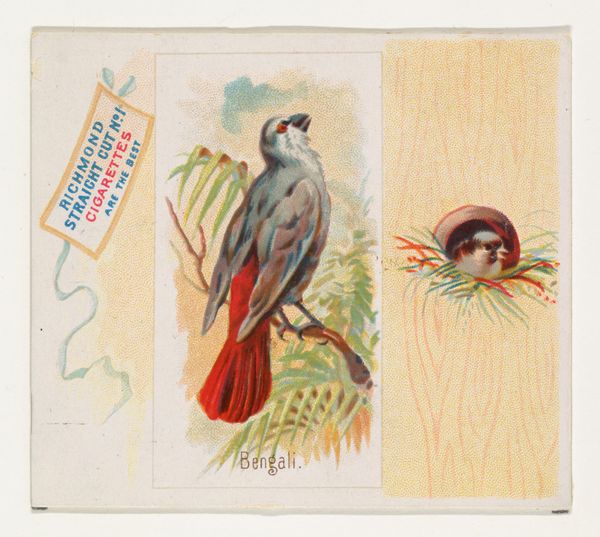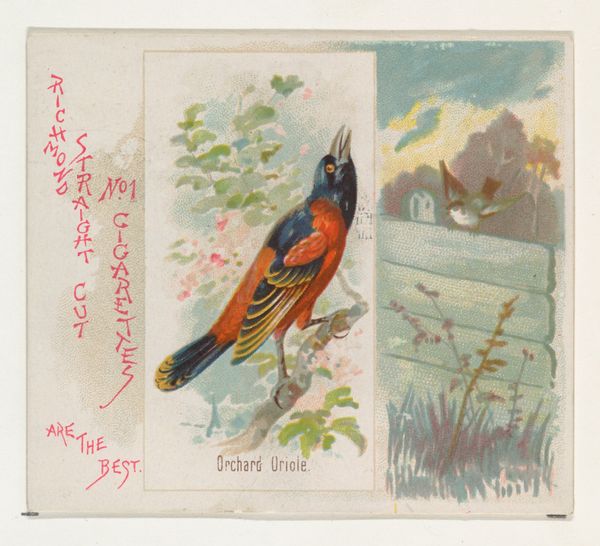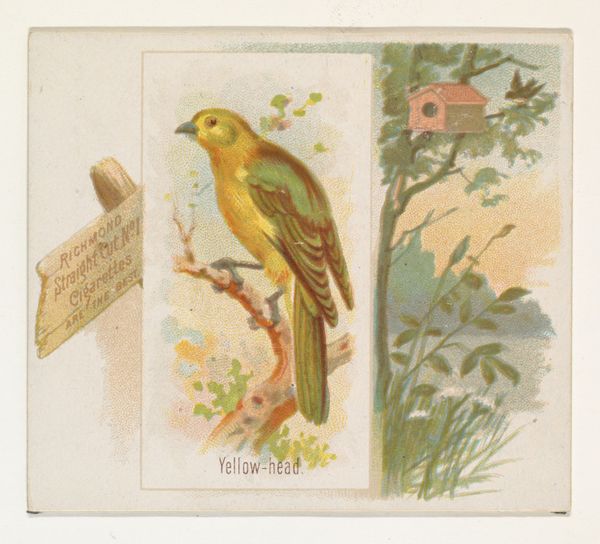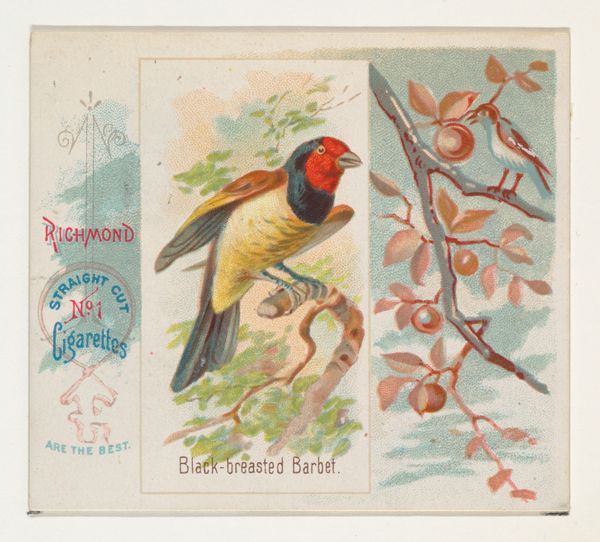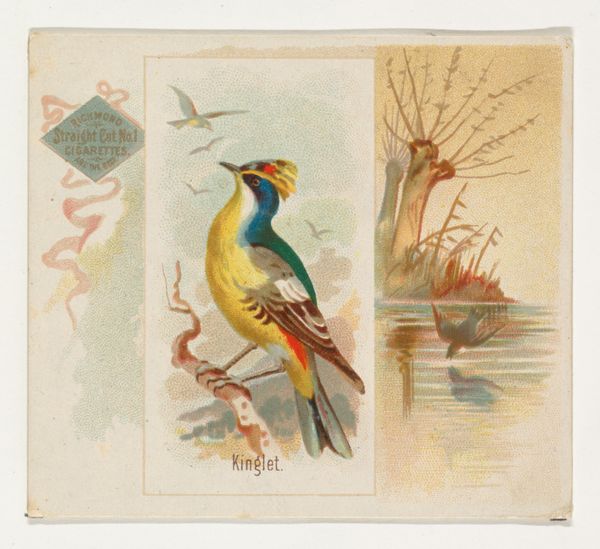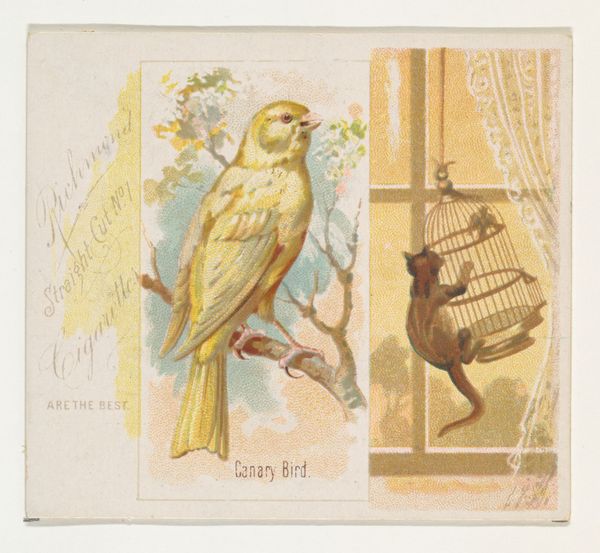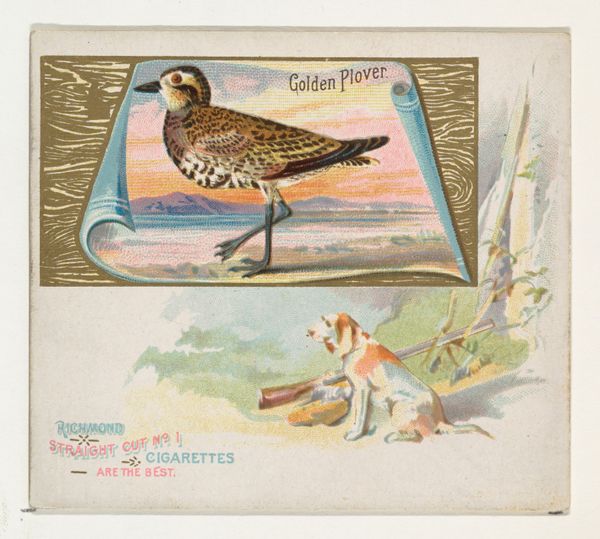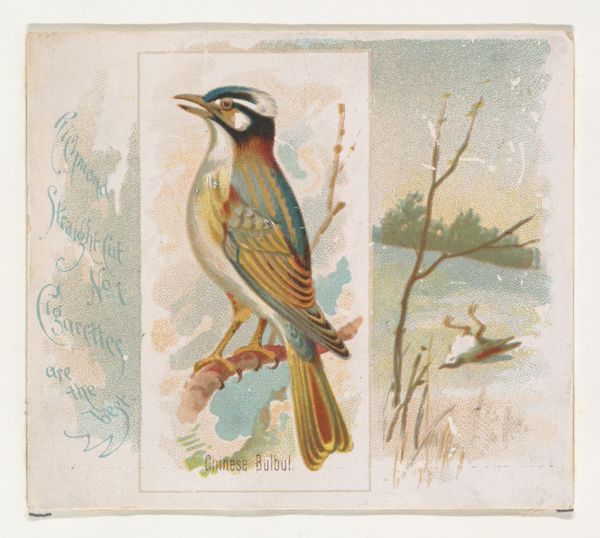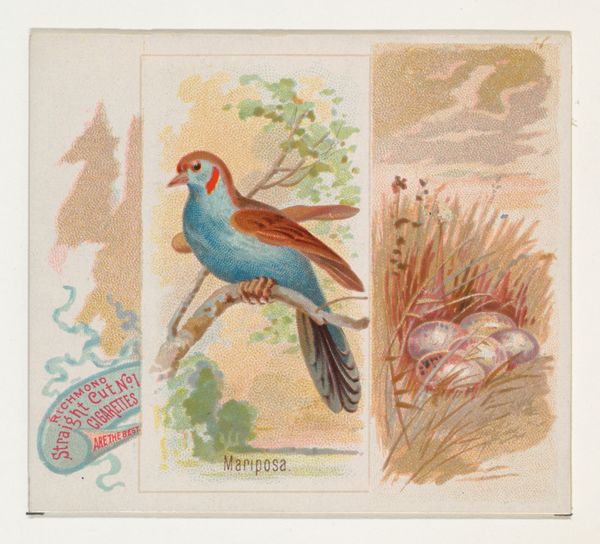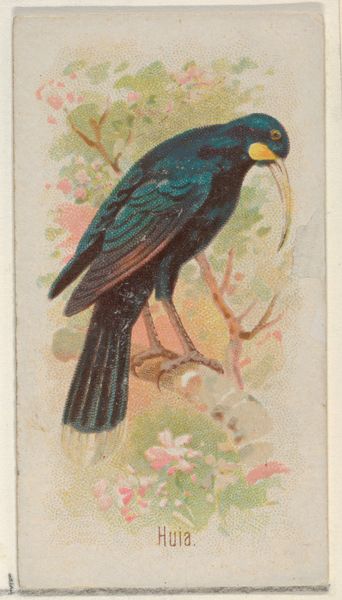
Mino Bird, from the Song Birds of the World series (N42) for Allen & Ginter Cigarettes 1890
0:00
0:00
drawing, coloured-pencil, print, watercolor
#
drawing
#
art-nouveau
#
coloured-pencil
# print
#
bird
#
watercolor
#
coloured pencil
#
watercolor
Dimensions: Sheet: 2 7/8 x 3 1/4 in. (7.3 x 8.3 cm)
Copyright: Public Domain
Curator: Here we have "Mino Bird," a print from the Song Birds of the World series (N42) created around 1890 by Allen & Ginter Cigarettes. It's currently part of the collection at the Metropolitan Museum of Art. Editor: It's strikingly delicate for something advertising cigarettes. The watercolor technique gives the central bird a feathery softness. What a whimsical design, especially that striking yellow head adornment on the Mino bird! Curator: These cards were inserted into cigarette packs as collectibles, tapping into the late 19th-century fascination with natural history and exoticism. Tobacco companies leveraged educational and entertainment value to build brand loyalty and cultivate a market eager to collect these images. Editor: It is clever how the composition guides your eye across the different panels. The sharp lines of the cigarette advertisement and the more organic shapes of the flora and fauna in the adjacent square; it's visually balanced in an interesting way. Curator: The inclusion of the "Richmond Straight Cut No. 1 Cigarettes" banner normalizes tobacco consumption. Its presence reveals the broader context of commodification during the era, where even seemingly harmless depictions of birds were employed to reinforce the reach of capitalist enterprise and consumption. Editor: Looking closer, I appreciate how the artist uses color to differentiate textures - a soft wash for the bird's body versus tighter linework for the branches and book. It's a fascinating dialogue between precise observation and gentle artistry. Curator: This artwork serves as an excellent window into late 19th century commodity culture. The blending of education, entertainment, and marketing narratives is powerful. Editor: For me, it’s a charming study of color and form, unexpectedly juxtaposing consumer culture with naturalistic depiction. It reveals that beauty, at its best, may be hiding behind something so uninteresting as the advertising panel!
Comments
No comments
Be the first to comment and join the conversation on the ultimate creative platform.

